From “The Killer,” Spirit Comics (8 December 1946), by Will Eisner and studio.
DB here:
This is my final effort to cram my latest book down the resisting gullet of the reading public. Reinventing Hollywood: How 1940s Filmmakers Changed Movie Storytelling has just come out in paperback and I’ve been using our blog to trace out some relevant ideas that surfaced in recent books and DVD releases. The first entry dealt with some general issues, the second with popular culture’s drive toward variation, the third with craft and auteurism. This one has murder on its mind.
Noir as mystery and mystique
Sorry, Wrong Number (1948).
Crime looms large in Reinventing Hollywood. But I forsake the usual category of film noir. It didn’t exist as a concept for the filmmakers or audiences of the day. It’s the creation of critics, first overseas and then, much later, here at home. That doesn’t make the category invalid, though. Many art-historical categories (Baroque, Gothic) are later inventions, and those can be illuminating. Still, I think we gain some understanding if we situate our inquiry, for a time at least, at the level of what people seemed to be trying to do at the time.
Put it another way. By focusing on noir as the model of Forties narrative, we miss the ways in which the films we pick out under that rubric participate in wider trends. We miss, for instance, the new importance of mystery in all plotting of the period.
In the 1930s, mystery was mostly confined to detective stories. Think of your prototypical 1930s movie; it’s unlikely to have a mystery at its center. (Okay, maybe we’re curious about the identity of Oz the Great and Powerful.) In the 1940s, though, filmmakers began to scatter mystery devices into other genres. Mystery became a central storytelling strategy for personal dramas (Citizen Kane, 1941; Keeper of the Flame, 1943), romantic comedies (The Affairs of Susan, 1945), war films (Five Graves to Cairo, 1943), social comment films (Intruder in the Dust, 1949), and domestic melodrama (Mildred Pierce, 1945; The Locket, 1946; A Letter to Three Wives, 1948). Some of what we call noir is part of this trend.
Over the same period, a fairly minor genre got promoted. Psychological thrillers can be traced back to Gothic novels and sensation fiction, but they became a distinct part of crime literature in the 1930s. They became an important genre for cinema in the 1940s, and so Reinventing Hollywood devoted a chapter to films like The Spiral Staircase (1945) and Sorry, Wrong Number (1948).
These aren’t canonical “noir” films, at least if your notion of noir stems from hard-boiled fiction. Some stem from the guilty-man plot exemplified in C. S. Forester’s novel Payment Deferred (1926), Patrick Hamilton’s play Rope (1929), and Anthony Berkeley Cox’s novel Malice Aforethought (1931). Less famous but just as interesting is the “woman-in-peril” thriller.
This was an upmarket version of romantic suspense novels associated in earlier decades with Mary Roberts Rinehart and Mignon Eberhart. Daphne du Maurier’s Rebecca (1938), one of the top-selling books of the 1940s, lifted the genre to respectability. Revisiting traces the wide-ranging variations that followed in film, fiction, and theatre. (An early draft of that chapter is elsewhere on this site.) Mystery is central to this subgenre. Who is endangering the protagonist? What are the real motives of the people around her, especially her lover or husband? Are her friends complicit? How will she escape?
The gynocentric thriller remains powerful in popular literature today. We’re currently in a rapid-fire cycle of it, typified by the work of Laura Lippman and Gillian Flynn. Some of the books have come to the screen: Gone Girl (2014), The Girl on the Train (2016), and A Simple Favor (2018). The HBO series Big Little Lies (2017-on), turns a fairly satiric domestic-suspense novel into a heavier exploration of spousal abuse. I’ll be writing more about this cycle later (and giving a paper on it this summer), but let me note two recent examples. One takes its Forties sources for granted, the other flaunts them. Both are coming to a screen near you.
In Alex Michaelides’ new novel The Silent Patient Alicia Berenson, an emerging painter, is found guilty of shooting her husband. Because she seems in permanent shock and refuses to speak a word, she’s confined to a mental institution. There the ambitious young psychotherapist Theo Faber tries to ferret out why she remains silent. The narration alternates, Gone Girl fashion, between Theo’s first-person investigation and Alicia’s diary of events leading up to the killing.
It’s a spare tale narrated in a clumsy style that doesn’t distinguish the two voices. And it reminds us that if you become a character in a novel or movie, don’t get into a car. But it does show the persistence of Forties strategies.
There’s the Crazy Lady (recalling Shock of 1946, above, and Possessed of 1947, as well as John Franklin Bardin’s 1948 novel Devil Take the Blue-Tail Fly). There’s the sinister side of the artworld, with a predatory dealers, a demented painter, and portraits that suggest sinister psychic forces. There’s the apparently rational man who becomes obsessed with a woman in a picture (as in Laura, 1944). There’s a mythological parallel to the heroine (here, Alcestis; in The Locket of 1946, Cassandra). And there’s the therapeutic motif of a doctor falling in love with a mentally disturbed patient (Spellbound, 1945). And there is, of course, a twist depending on suppressive narration.
The Silent Patient quietly absorbs these Forties conventions, with virtually no mention of the tradition. At the other extreme sits the self-conscious geekery of A. J. Finn’s The Woman in the Window. In an earlier entry on the eyewitness plot I swore I wouldn’t give space to this novel, largely because I resist people swiping titles of movies I admire. But after alert colleague Jeff Smith told me, “It’s as if he read your Forties book,” I figured I could break my rule.
Indeed this eyewitness thriller relies on a great many narrative tricks from the period. We get a Crazy Lady, dreams, hallucinations, an unreliable narrator, the drama of doubt, flashbacks within flashbacks (with the revelatory one coming at the end), and a Gothic climax punctuated by lightning bursts. Also, inevitably, a car crash.
The book’s epigraph comes from Shadow of a Doubt, and the pages that follow are littered with references to 1940s movies. Our homebound heroine lives in thrall to DVDs and TCM, though her impending fate gives a new meaning to “Netflix and chill.”
The Woman in the Window is soaked in contemporary movie-nerd culture. The heroine updates Jeffries’ tech gear in Rear Window by shooting video footage of the suspects across the way. She mentions Kino and Criterion discs, and even refers to “diegetic sound.” (Has she read Film Art: An Introduction?}
Like The Silent Patient, Finn’s book illustrates how much modern thrillers owe to Forties movies. But it also exemplifies how noir has become a kind of brand and a signal of hip tastes. Maybe that’s a reason to back off the label for a while.
Noir in brief
But let’s not back off too far. Any student of 1940s Hollywood can learn a lot from the vast literature on noir. The most recent item to cross my desk is James Naremore’s Film Noir: A Very Short Introduction. (It’s due to be published in April.) As you’d expect, the author of More Than Night will bring a wide-ranging expertise to a compact survey of books, films, and ideas.
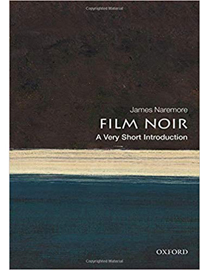 I wish I could’ve signaled his study of “the modernist crime novel” in my book. I emphasize how modernist narrative techniques shaped middlebrow fiction, which in turn made their way into movies. Naremore points out some more direct affiliations:
I wish I could’ve signaled his study of “the modernist crime novel” in my book. I emphasize how modernist narrative techniques shaped middlebrow fiction, which in turn made their way into movies. Naremore points out some more direct affiliations:
In the previous two decades modernism had influenced melodramatic fiction of all kinds, and writers and artists with serious aspirations now worked at least part time for the movies.
When the trend reached a peak in the early 1940s, it made traditional formulas, especially the crime film, seem more “artful.”. . . And yet there was a tension or contradiction within the Hollywood film noirs of the 1940s. Certain attributes of modernism—its links to high culture, its formal and moral complexity, its frankness about sex, its criticism of American modernity—were a potential threat to the entertainment industry and were never fully absorbed into the mainstream.
Naremore goes on to discuss several influential writers—Hammett, Greene, Cain, Chandler, Woolrich—and key films such as The Maltese Falcon and Double Indemnity as examples of “tough modernism” in fiction and film. One of the virtues of the book is its sweep: it covers nearly eighty years of noir on the page and on the screen. Like everything else Jim writes, it’s essential for film fans and researchers. His recently inaugurated webpage displays his range of interests.
The Big Nutshell
Did the 1940s give us the habit of calling a movie The Big Whatever? True, we had The Big Parade in 1925 and The Big Broadcast of 1935 but it seems that the next decade was quite big on bigness. Apart from The Big Sleep (1946), we had The Big Store (1941), The Big Street (1942), The Big Shot (1942), The Big Clock (1948), The Big Steal (1949), and The Big Cat (1949). Many episodes of Dragnet, as both radio show and later TV program, had The Big . . . as their title prefix.
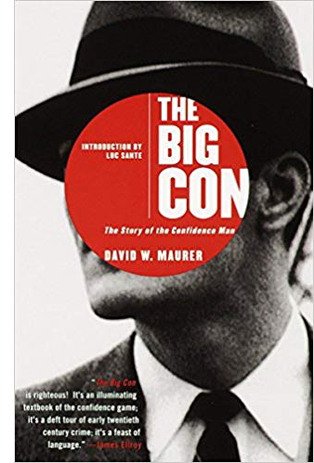 So I wish I’d known about David W. Maurer’s 1940 book The Big Con: The Story of the Confidence Man. It’s hard-boiled reportage in the vein of Courtney Riley Cooper’s flinty Here’s to Crime (1941). Maurer introduces us to a repertoire of grifts that will nimbly extract dough from the mark (aka the fink).
So I wish I’d known about David W. Maurer’s 1940 book The Big Con: The Story of the Confidence Man. It’s hard-boiled reportage in the vein of Courtney Riley Cooper’s flinty Here’s to Crime (1941). Maurer introduces us to a repertoire of grifts that will nimbly extract dough from the mark (aka the fink).
There are small-scale operations (the short con), as well as complex ensemble efforts using, naturally, the Big Store (fitted out with a fake racetrack wire). The scam shown in The Sting (1973) is a Big Store con. Maurer provides a sociological study as well: “Confidence men, like civilians, mate once or more (usually more) in their lives.” I don’t know exactly how I would have worked in a footnote to The Big Con, but I would have tried.
While Maurer was writing The Big Con, something more sinister was going on. In her four-story farmhouse, Frances Glessner Lee was laboring over the Nutshell Studies of Unexplained Death.
These were crime scenes presented on an itty-bitty scale. Little corpses—stabbed, drowned, hanging—are surrounded by the most banal furnishings. Exquisitely miniaturized chairs, rugs, lamps, beer bottles, calendars (“Corn Products Sales Company”) surround the pathetic figures. A woman stares up from a bathtub alongside tiny towels, hanging socks, and even a simulacrum of tap water endlessly gushing. Frank Harris is found drunk and crumpled in front of a saloon; the next scene shows him dead in his cell. What happened?
Ms Lee, a wealthy devotee of criminal investigation, recreated these grim tableaus as audio-visual aids for police training. Exactly how useful they were as pedagogy isn’t clear. The imagery recalls classic mysteries, and it’s not surprising that Lee was a friend of Erle Stanley Gardner, creator of Perry Mason. Yet they have a creepy melancholy quite alien to Golden Age puzzle plots. As a testimony to the 1940s fascination with aestheticized homicide, they’re close to Weegee or Chester Gould. But they’re rendered as fastidiously as a Joseph Cornell box. I see in the Nutshells the populist Surrealism that led, at the other end of the scale, to Wisconsin’s House on the Rock (which began construction in the 1940s).
Corinne May Botz is the David Fincher of the Lee oeuvre. Her camera in The Nutshell Studies of Unexplained Death gets deep into the scene and renders the most upsetting images with a cold precision that matches the staging. These bits of cloth and plastic, sculpted and arranged with maniacal precision, make death at once childish and bleak. Blown up in Botz’s photos, the scenes radiate anxiety and menace. Dollhouse noir?
Frozen movies
Will Eisner, “Beagle’s Second Chance,” Spirit Comics (3 November 1946).
In Reinventing Hollywood I suggest that techniques we find in the films have their counterparts in popular novels, short stories, plays, and radio shows. Artists in these media were also exploring shifting time frames and viewpoints, voice-over narration, and other devices. I called it the multimedia swap meet, where mass-culture wares were available for use and revision (thanks to the variorum).
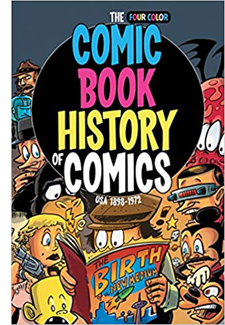 A Christmas gift from alert programmer Jim Healy reminded me of my neglect of a major medium. Jim gave me the wondrous Comic Book History of Comics by Fred Van Lente and Ryan Dunlavey. Each teeming page is jammed with facts, figures, and follies from the history of American comic art, illustrated with frantic drawings and exploding panels. As a comics fan, I should have mentioned how the narrative strategies I traced in film have counterparts in many of the trends Van Lente and Dunlavey cover.
A Christmas gift from alert programmer Jim Healy reminded me of my neglect of a major medium. Jim gave me the wondrous Comic Book History of Comics by Fred Van Lente and Ryan Dunlavey. Each teeming page is jammed with facts, figures, and follies from the history of American comic art, illustrated with frantic drawings and exploding panels. As a comics fan, I should have mentioned how the narrative strategies I traced in film have counterparts in many of the trends Van Lente and Dunlavey cover.
One example is shown at the top of today’s entry: an effort toward optical POV in Will Eisner’s The Spirit. Eisner renders almost all the panels on that page as subjective. At the time, films were exploring the same idea for certain scenes (e.g., Hitchcock’s work), for long stretches (Dark Passage, 1947), and for nearly the whole movie (The Lady in the Lake, 1947).
Of course Eisner’s Spirit tales evoke noir visuals as well–and become more noirish as the Forties go along, at least to my eye. Other cartoonists, particularly Chester Gould and Milton Caniff, push toward the steep compositions and chiaroscuro lighting we find in the films. I’m inclined to say that the movies got there first; I argued in The Classical Hollywood Cinema that noirish visual designs were often recruited for scenes of crime and mystery in the 1920s and 1930s. (A blog entry found examples from the 1910s.) I suspect that artists of the comics adopted those schemas when they started to make cops-and-robbers strips. By the 1940s, though, with Eisner and others, the visual dynamism pushed beyond what we see in most films. Except, as always, for Welles: Mr. Arkadin seems an Eisner comic brought to life.
Vanilla noir
The Man Who Cheated Himself (1950).
Noir is a tricky category because it’s a cluster concept. It can refer to visual style, matters of narrative or narration (haunted protagonists, plays with viewpoint), genre (drama, not comedy), and themes (betrayed friendships, dangerous eroticism, male anxiety). Take away one dimension and you might still be inclined to call the movie a noir. Beyond a Reasonable Doubt (1956) has a noir plotline, but its disarmingly drab images mostly lack the low-key look. And maybe someone would call Murder, He Says (1945) a noir comedy.
A good example of mild noirishness is The Man Who Cheated Himself (1950), now made available in a handsome UCLA restoration from Flicker Alley. Ed Cullen is a tough homicide cop lured by a rich woman into a murder plot. He helps her cover it up, but his younger brother, just starting out in the police force, gets too close to solving the case.
The action climaxes in a vigorous showdown in San Francisco’s Fort Point compound. Director Felix Feist, who gave us the better-known The Devil Thumbs a Ride (1947) and The Threat (1949), exploits this impressive location.
Most of the film is more soberly shot, but one long take of an interrogation uses the typical Forties image: a low-slung camera, figures deployed in depth and rearranged as the pressure intensifies.
The Blu-ray release includes a well-filled booklet and two excellent documentaries. Brian Hollis pinpoints the use of San Francisco locations and has interesting comparisons with Vertigo. A second short provides background on the participants and the film’s production, with shrewd remarks on the film’s casting by Eddie Muller. I was also pleased to see that the film, full of smokers, includes Hollywood’s favorite brand of the Forties, Chesterfields.
From Sunrise to Moonrise
Moonrise offers a different negotiation of noir conventions. The Criterion Blu-ray release, produced by Jason Altman, makes this 1948 classic available in a much better version than I’ve seen before. I discuss the opening in Reinventing, taking it as an example of a deeply subjective montage sequence, and I posted the clip online as a supplement.
After knowing the film for years, I expected that the 1946 source novel by Theodore Strauss would have some of the delirious prose we get in Steve Fisher’s I Wake Up Screaming (1941). Strauss wrote film journalism for the New York Times, so it seemed likely he would incorporate some of the pseudo-cinematic techniques of voice-over, subjectivity, and the like, as do other crime novels I mention in Reinventing. Instead, the storytelling is standard hardboiled. Here, for instance, is Strauss sketching the buildup of grudges that leads Danny to kill his long-time nemesis Jerry:
Every time his fist smacked into Jerry’s soft side or smashed Jerry’s mouth against his teeth Danny knew he was paying back. He was paying back for that first day at grade school when he was the new kid and Jerry had whipped him with the whole playground backing him. He was paying back for the night Jerry and his gang took him into the alley and tarred him because Jerry said he’d squealed to the principal. He was paying back for the scar on his shoulder left by Jerry’s cleats in scrimmage seven years ago. He was paying back for every dirty crack jerry had ever made about him or his father in public or private, to his face and behind his back. Paying back. Paying pack good.
Borzage’s movie turns this compact backstory into something much more hallucinatory.
The montage intersperses a hanged man with vignettes of his son being bullied from childhood on. First the rippling miasma seen under the credits gives way to blobs appearing as if in reflection. The camera reveals them as mysteriously projected on a wall (or is it a screen?), and then it picks up feet stalking toward the gallows.
Witnesses are revealed standing in the rain, and the camera rises to show the execution as shadows flung onto the wall/screen.
It seems more of a feverish childhood vision of the hanging rather than any veridical presentation. Cut to a view of a baby with a doll dangling over his crib. This traumatic image is followed by scenes of jeering schoolboy cruelty. (“Danny Hawkins’ dad was hanged!”)
It’s a murky, delirious passage. Its tactility, with mud smeared into Danny’s face, admirably prepares us for a film steeped in swamp water and dank foliage. Here, as elsewhere, 1940s filmmakers are rehabilitating the expressionist devices of late silent film.
The rest of the film doesn’t present such overpowering imagery, but by continuing the opening sequence in the present, following Danny as he drifts past a dance pavilion, the narration makes Danny’s fight with the bully Jerry a furious culmination of all the indignities he’s suffered.
The plot traces a familiar Forties trajectory, following a flawed but not despicable man driven to conceal a crime. In the course of his evasions, he tries to make a life with a compassionate woman. There are many wonderful scenes, including a suspenseful ride on a ferris wheel and a lyrical dance in an abandoned mansion. The lawman tracking Danny comes off as gentle and compassionate. The rippling imagery of the opening recurs in the background of shots, as if the swamp were waiting to claim Danny. As Hervé Dumont points out in a bonus conversation with Peter Cowie on the Criterion disc, all this gloom eventually clears to arrive at a sun-drenched resolution quite different from your typical noir payoff. (Though it’s faithful to the novel, as indeed most of the film’s plot is.)
This time around I was struck by the delicacy of Frank Borzage’s direction in the less flamboyant passages. This master of silent cinema knows how to let a pair of hands show distress, an effort toward tenderness, and then rejection.
Borzage was most famous for his feelingful melodramas Humoresque (1920), Seventh Heaven (1927), and Street Angel (1928). He made those last two features at Fox while F. W. Murnau was there, and it’s probably not too much to see the brackish mist of Borzage’s 1948 film as reviving the look of the nocturnal countryside scenes of Sunrise (1927).
Some shots might almost be homages to Murnau’s film.
The compositions remind us that the 1940s deep-focus style isn’t far from the wide-angle imagery Murnau pioneered in the silent era. Although Strauss’s novel gives the Borzage film its title, we’re free to imagine Sunrise (in which the moon figures prominently) as a prefiguration of Moonrise, in which we never see the moon rise.
A final thanks to all who have picked up a copy of Reinventing Hollywood. Apart from its arguments, I hope that it steers you toward some new viewing pleasures.
Film rights to The Silent Patient, whose author has an MFA in screenwriting, have been sold to Annapurna and Plan B. Amy Adams is set to star in The Woman in the Window, from Fox 2000.
It seems that The Woman in the Window owes a debt to more than movies. A detailed profile of its author in The New Yorker suggests that exposure to Highsmith’s Ripley novels at an impressionable age can have serious consequences, especially if you wind up among the Manhattan literati.
Robert C. Harvey offers a careful analysis of Eisner’s Spirit story, “Beagle’s Second Chance,” in The Art of the Comic Book: An Aesthetic History (University Press of Mississippi, 1996), 178-191. Interestingly, the chapter is titled, “Only in the Comics: Why Cartooning Is Not the Same as Filmmaking.”
The most comprehensive book on Borzage’s career I know is Hervé Dumont’s de luxe edition Frank Borzage: Sarastro à Hollywood (Cinémathèque Française, 1993). An English translation was published in 2009.
The following errors are in the hardcover version of Reinventing Hollywood but are corrected in the paperback.
p. 9: 12 lines from bottom: “had became” should be “had become”. Urk.
p. 93: Last sentence of second full paragraph: “The Killers (1956)” should be “The Killing (1956)”. Eep. I try to do the film, and its genre, justice in another entry.
p. 169: last two lines of second full paragraph: Weekend at the Waldorf should be Week-End at the Waldorf.
p. 334: first sentence of third full paragraph: “over two hours” should be “about one hundred minutes.” Omigosh.
We couldn’t correct this slip, though: p. 524: two endnotes, nos. 30 and 33 citing “New Trend in the Horror Pix,” should cite it as “New Trend in Horror Pix.”
Whenever I find slips like these, I take comfort in this remark by Stephen Sondheim:
Having spent decades of proofing both music and lyrics, I now surrender to the inevitability that no matter how many times you reread what you’ve written, you fail to spot all the typos and oversights.
Sondheim adds, a little snidely, “As do your editors,” but that’s a bridge too far for me. So I thank the blameless Rodney Powell, Melinda Kennedy, Kelly Finefrock-Creed, Maggie Hivnor-Labarbera, and Garrett P. Kiely at the University of Chicago Press for all their help in shepherding Reinventing Hollywood into print.
The Nutshell Studies of Unexplained Death: Parsonage Parlor, by Lorie Shaull.
from Observations on film art https://ift.tt/2Wjzp2w
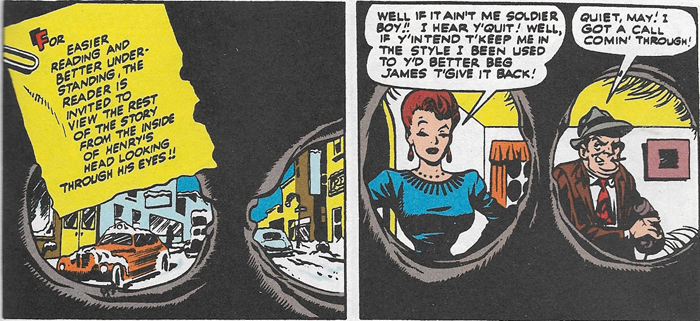
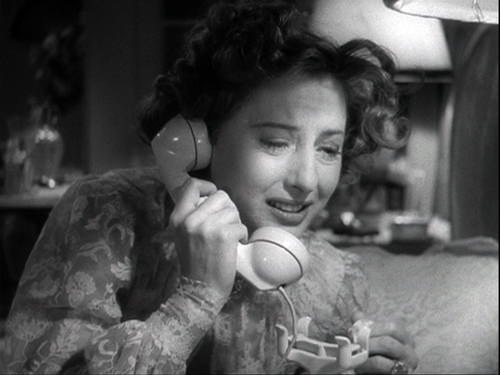
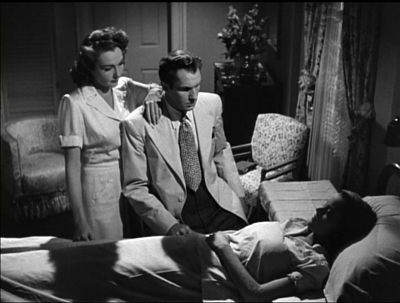
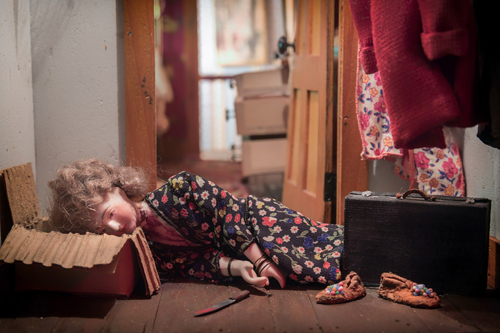
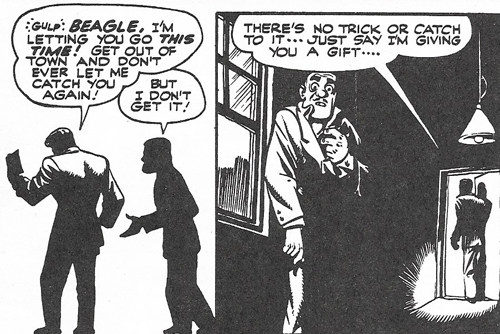
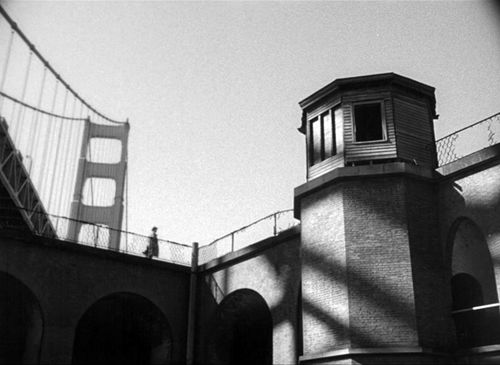
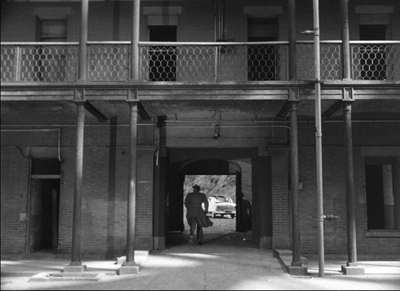
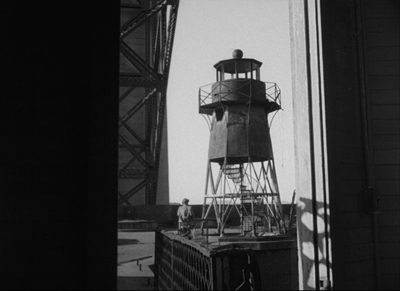
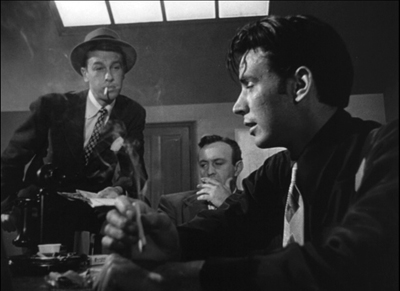
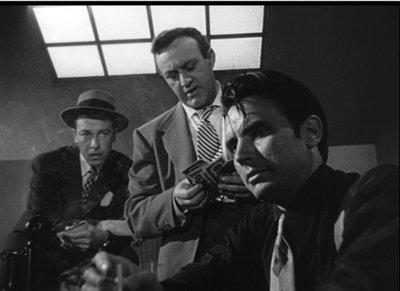
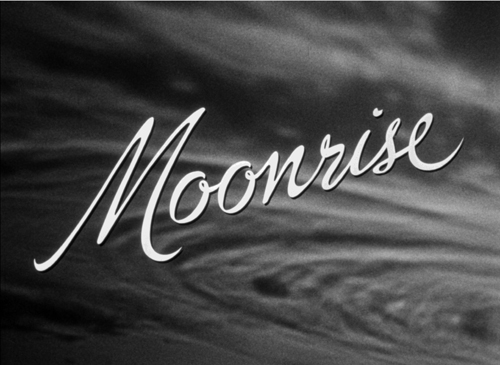
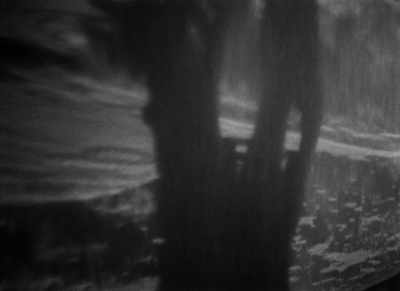
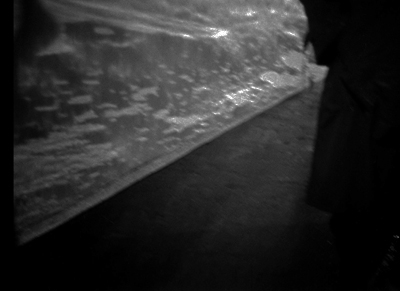
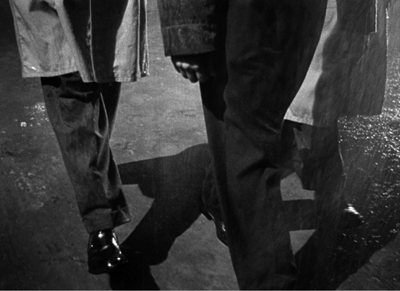
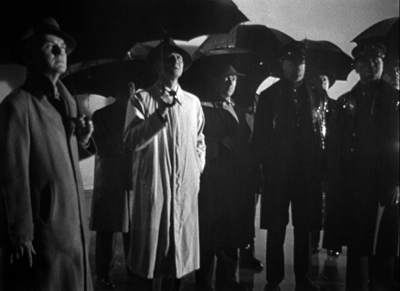
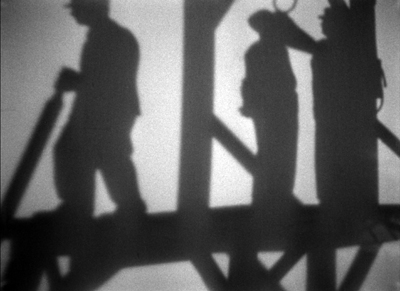
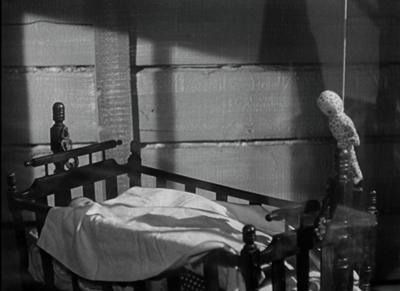
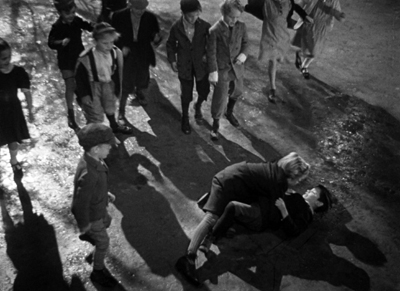
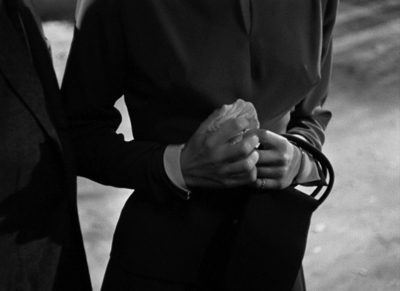
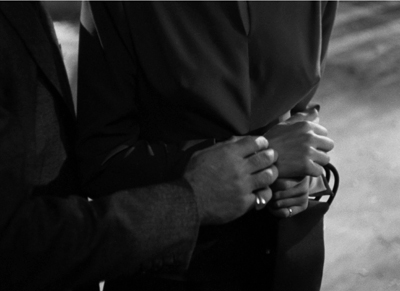
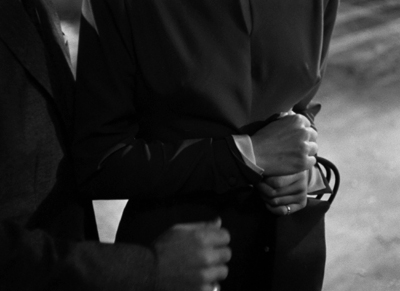
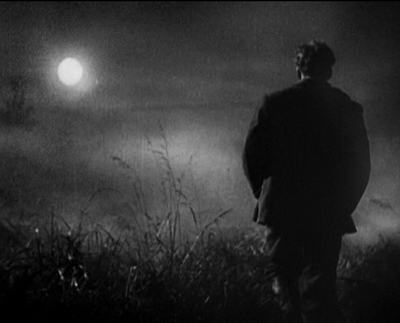
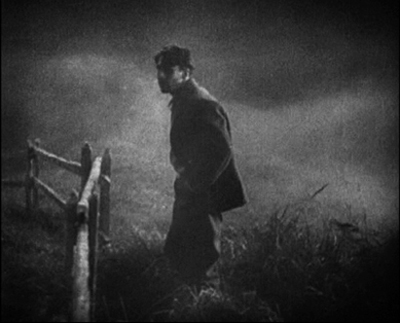
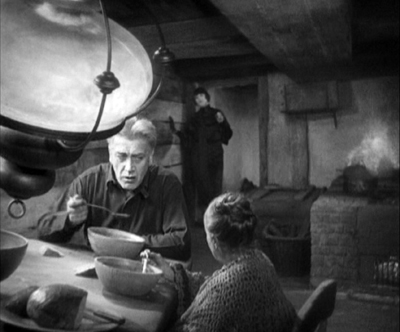
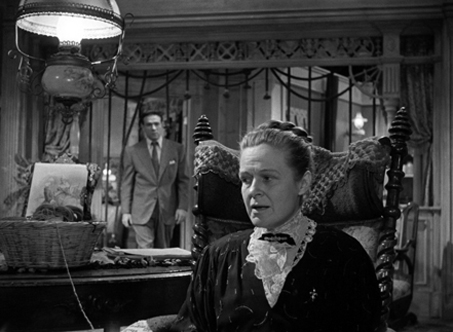
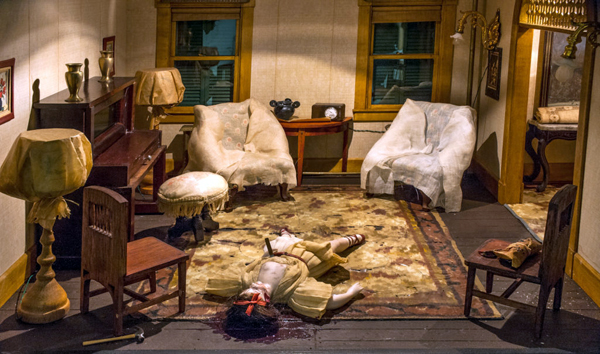
Nessun commento:
Posta un commento